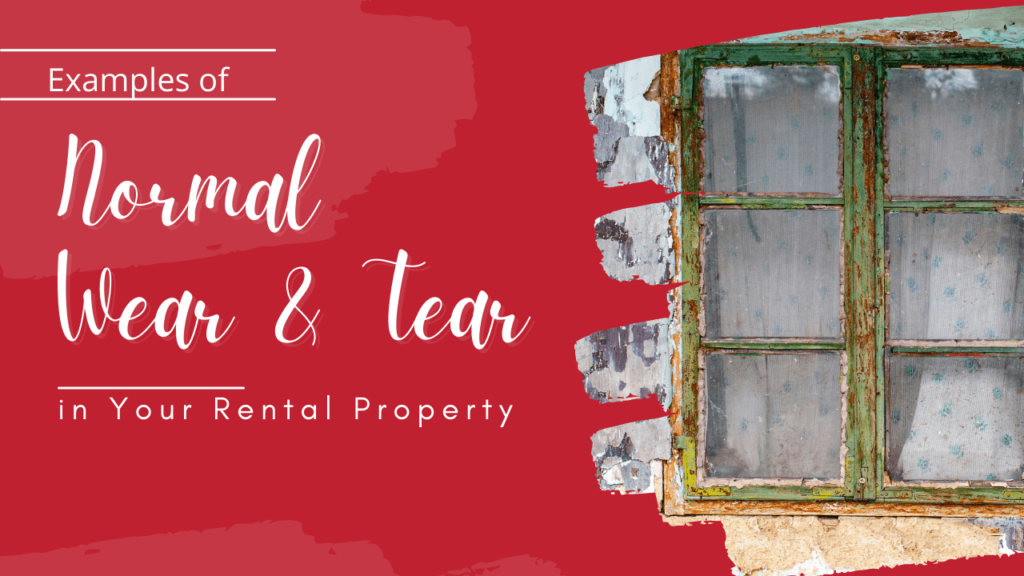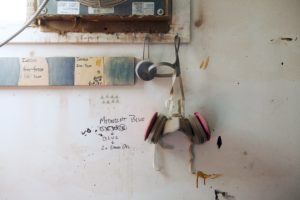
What is normal wear and tear when we’re talking about Santa Rosa rental properties?
We’re sharing some examples in today’s blog because we know that owners often struggle after a tenant moves out to determine what they’re responsible for (wear and tear) and what the tenants are responsible for (damage).
As you assess the condition of your property and compare it to the condition your home was in when tenants took possession, make sure you know what you’re looking at.
Defining Wear and Tear in Santa Rosa Properties
Wear and tear can be defined as the deterioration that occurs in a property simply from the act of living there. If you take a look at the home you’re occupying yourself, you can probably see some areas where general wear and tear is identifiable. Things happen when human beings and their pets and guests are coming through the home, using the appliances, flushing the toilets, and living their lives.
Paying for wear and tear is your responsibility as the property owner. As you turn the property over and prepare it for new tenants, you incur costs in making the property ready for another tenancy. Those wear and tear issues need to be budgeted for when you have tenants moving out.
Even if your residents are perfect and your property is well-maintained, you’ll have a few things you need to clean and replace during the turnover period. Those wear and tear costs cannot be deducted from security deposits or charged to tenants. You pay for them yourself.
Normal Wear and Tear: Some Examples
So what does wear and tear look like? Here are some of the examples we find in the portfolio of homes we rent out as professional Santa Rosa property managers.
- Nail holes in walls. Your tenants will not want to live with bare walls in every room of the property. They will likely hang pictures, frames, paintings, mirrors, clocks, and other items. You’ll likely find small nail holes in the wall where those things were hung. You cannot expect tenants to repair those holes. You’ll need to take care of filling and painting after they’ve moved out.
- Scuff marks from furniture. You’re also likely to find scuff marks on the walls and on the carpets from where furniture was placed. A sofa that’s been in the same living room location for a year or longer will likely leave marks. Whether it’s the carpet or the wall paint – you’ll need to pay for those repairs.
- Worn carpet. Those high traffic areas are going to be rough on the carpet. It may look worn near doors and on the path from door to kitchen, for example.
- Faded or worn paint and window treatments. The sun in Santa Rosa can be beautiful and bright. That’s great when we’re outdoors, but it also impacts your paint, your walls, the exterior of the property, and the window blinds and treatments. This is wear and tear.
How You Know it’s NOT Wear and Tear
 Santa Rosa rental property owners are financially responsible for fixing normal wear and tear items. Damage is a different story. It goes well beyond wear and tear and it’s outside of what might happen to a home during routine occupancy. Damage is due to a tenant’s neglect, abuse, or misuse. Sometimes it’s intentional. Usually it’s accidental.
Santa Rosa rental property owners are financially responsible for fixing normal wear and tear items. Damage is a different story. It goes well beyond wear and tear and it’s outside of what might happen to a home during routine occupancy. Damage is due to a tenant’s neglect, abuse, or misuse. Sometimes it’s intentional. Usually it’s accidental.
Damage might be large holes in the wall or drywall that’s caved in due to heavy items being hung like televisions. Broken appliances, carpets and walls that have stains or scribble, doors off their hinges, and screens that are torn up or missing are all examples of damage.
We cannot overstate the importance of a move-in condition report, which documents the condition of your property and a corresponding move-out condition report, which reflects how its condition may have changed during the tenancy.
If you’d like some help determining what qualifies as normal wear and tear and what can be considered damage, we’re your Santa Rosa property management experts and we can provide professional assistance. Contact us at Redwood Residential Property Management.




 Marla Shaw
Marla Shaw Graduate of Empire Business School, Santa Rosa in 1998 with an AA degree in Office Administration. Lorena has over 30 years of experience in office administration. From the California State Legislature to North Bay Realtors Association and most recently with Sue Carrell & Associates.
Graduate of Empire Business School, Santa Rosa in 1998 with an AA degree in Office Administration. Lorena has over 30 years of experience in office administration. From the California State Legislature to North Bay Realtors Association and most recently with Sue Carrell & Associates.